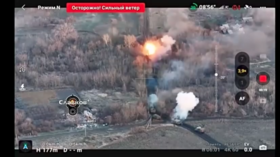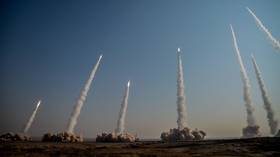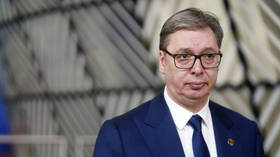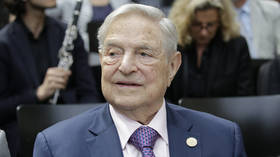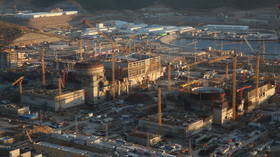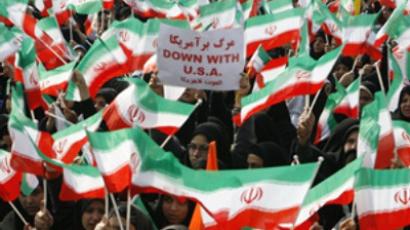ROAR: “US halfway to Russia’s position on new START treaty”

The preparation of a new treaty on strategic offensive arms reduction and the Iranian nuclear program remain the two key points of Russian-US relations, the media say.
The Russian and US presidents discussed them in Singapore on November 15. Some observers say that Moscow and Washington may come to an agreement on the Iranian problem even earlier than on the new START treaty.
Russia and the US are unlikely to ratify a new agreement by December 5, the media stressed after the meeting of the presidents. The current Strategic Arms Reduction Treaty (START I) expires by that date.
Major issues still remain, but Russian President Dmitry Medvedev said that “an impetus” will be given to the talks on the new document and the final text will be drafted by December. However, it will take some time to ratify a new treaty.
According to the current treaty, the two countries are committed to reducing their nuclear warheads to 6,000 and delivery vehicles to 1,600 each. Obama and Medvedev agreed a new pact during talks in Moscow in July, which envisaged cutting nuclear arsenals to 1,500-1,675 operational warheads and delivery vehicles to 500-1,000.
“Observers described the meeting between the US and Russian presidents as the main rendezvous of the American leader on the sidelines of the Asia-Pacific Economic Cooperation summit,” Nezavisimaya Gazeta daily said. However, the two presidents did not make “sensational statements” after their talks, the paper said.
At the same time, analysts point at “the positive dynamics of the communication” between the two leaders, the daily noted. Without it, solving tasks set by Medvedev and Obama “would be impossible,” it added.
After the talks, Obama made it clear that “complicated technical issues” remain, and Medvedev recognized that there are some problems. Some of them concern inspections at a missile manufacturing plant in the Russian city of Votkinsk.
“The US does not want to stop monitoring this facility, while Moscow is insisting on this,” Nezavisimaya Gazeta said. “Also, there are disagreements regarding the exchange of telemetric data about missiles during the tests,” the paper said, adding that the current START treaty bans the parties from limiting access to the data.
The American side hopes that Obama and Medvedev will sign a new treaty on strategic arms reduction when the US president visits Europe in December, the paper said, adding that Obama is expected to receive his Nobel Peace Prize then.
Another Russian daily, Kommersant, also wrote that the meeting between Obama and Medvedev in Singapore has answered a key question about Russian-US relations, and about how Moscow and Washington intend to conclude the new treaty in December. Despite the remaining disagreements, the US seems to be ready “to meet some of Russia’s demands,” the paper said.
There was an alarming signal from Washington some days before the meeting of the two leaders, the daily said, adding that US officials called Russia’s reaction to US proposals “disappointing.” However, in Singapore the presidents demonstrated that they had managed “to come to an agreement.”
A source close to the talks on the new treaty told the paper that the two key points of disagreements are “the minimal level of delivery vehicles and the mechanism of control over mobile intercontinental ballistic missiles.” At the same time, “no problems are expected with the maximum level of warheads,” the daily said.
“The first point of disagreements became evident after the July meeting between Dmitry Medvedev and Barack Obama in Moscow,” the paper said. The US indicated the desired number of 1100 remaining delivery vehicles, while Russia “proposed a more radical approach” – to reduce this number to 500 delivery vehicles, the daily added.
However, during the last four months the positions have become closer, the paper said. “Americans seem to be halfway to our position,” the daily said, citing its source. “That could mean that the US is ready to retain about 800 delivery vehicles instead of 1100,” the paper assumed.
The second disagreement concerns the US intention “to preserve tough control over the Topol intercontinental ballistic missile, which Moscow is actively opposing,” the paper said. The two presidents said nothing about these points after their meeting in Singapore. At the same time, they “expressed the readiness to come to the signing of the agreement on strategic arms by early December,” the daily stressed.
“Russian Foreign Minister Sergey Lavrov explained what allows the two presidents to look ahead with confidence,” Kommersant said. The minister said that Medvedev and Obama agreed to make the mechanism of control “simpler and less costly,” the paper added.
“That means that the US is ready to agree on one of the key points of the disagreements, the mechanism of control over intercontinental ballistic missiles,” the daily said. “And this makes the achievement of the agreement on strategic arms reduction real, even by December 5.”
The mechanism of control in the current START treaty is “very complicated, it includes notifications, the exchange of information, mutual inspections of facilities,” disarmament analyst Evgeny Myasnikov told Vedomosti daily.
Now it is logical to make this mechanism simpler, the analyst said: “in 1990, when START I was being [prepared], the level of mutual trust between the two countries was far lower,” Myasnikov said.
Moscow and Washington are discussing two documents: a new treaty and the so-called “bridging agreement” which prolongs the old treaty until the new one is ratified by the parliaments. However, a source in the Russian Foreign Ministry told Interfax news agency that “there are judicial possibilities for prolonging the old treaty until a new one is signed.”
Myasnikov recalled that then-President George Bush’s administration proposed to prolong the control mechanism of the START treaty, “but Moscow has always disliked the idea.” Now, however, a bridging agreement is needed “to preserve the transparency of the strategic arsenals of the parties,” Myasnikov said.
Many observers stress that the two countries understand their mutual interests in the sphere of reduction of nuclear arsenals. This has become especially clear “after the US changed its position regarding the deployment of missile defense in Europe,” Rossiyskie Vesti weekly said.
The two presidents did not discuss the US missile defense system in Singapore, NTV television noted. “It seems that after the US administration abandoned plans to station the missile defense system in Europe, this issue has been left out of the agenda,” the TV channel stressed.
The second largest issue Medvedev and Obama discussed during their meeting was the Iranian nuclear program. Obama toughly stated that time was “running out” and Dmitry Medvedev “said more evasively” that Russia was “not satisfied” with the pace of negotiations on Iran’s nuclear program, Vremya Novostey daily said.
If the international community’s plan fails, “other options remain on the table, in order to move the process in a different direction,” Medvedev said. The president “did not rule out the possibility of introducing sanctions if the talks were deadlocked again,” the paper said.
It is clear that Washington has “a tougher attitude on the Iran issue,” Rossiyskie Vesti said. This question seems to be “a certain stumbling block in the expansion of the dialogue” between Russia and the US,” the weekly said. “Or, rather, the views of the Russian and the US leaderships of how the international community should guarantee the peaceful character of the Iranian nuclear program [are different],” the paper said.
Russia’s position does not exclude the possibility of sanctions against Iran, but Moscow still hopes to come to an agreement with Tehran, Kommersant daily said. The date after which the mechanism of sanctions might be launched “seems to be the only principal difference in attitudes of Russia and the US to Iran,” the daily noted.
Moscow is inclined to act on the issue of sanctions “according to circumstances” without any concrete date, the paper said. But if Iran “continues with its confrontational position toward Russia, it will be far easier for Moscow to take decision on sanctions,” the paper stressed.
Then, at the next Russian-US summit, which is likely to take place on December 5, the main event will be an announcement of Russia’s “joining sanctions against Iran, rather than the long-awaited signing of the strategic offensive arms treaty,” the paper said.
Sergey Borisov, RT


